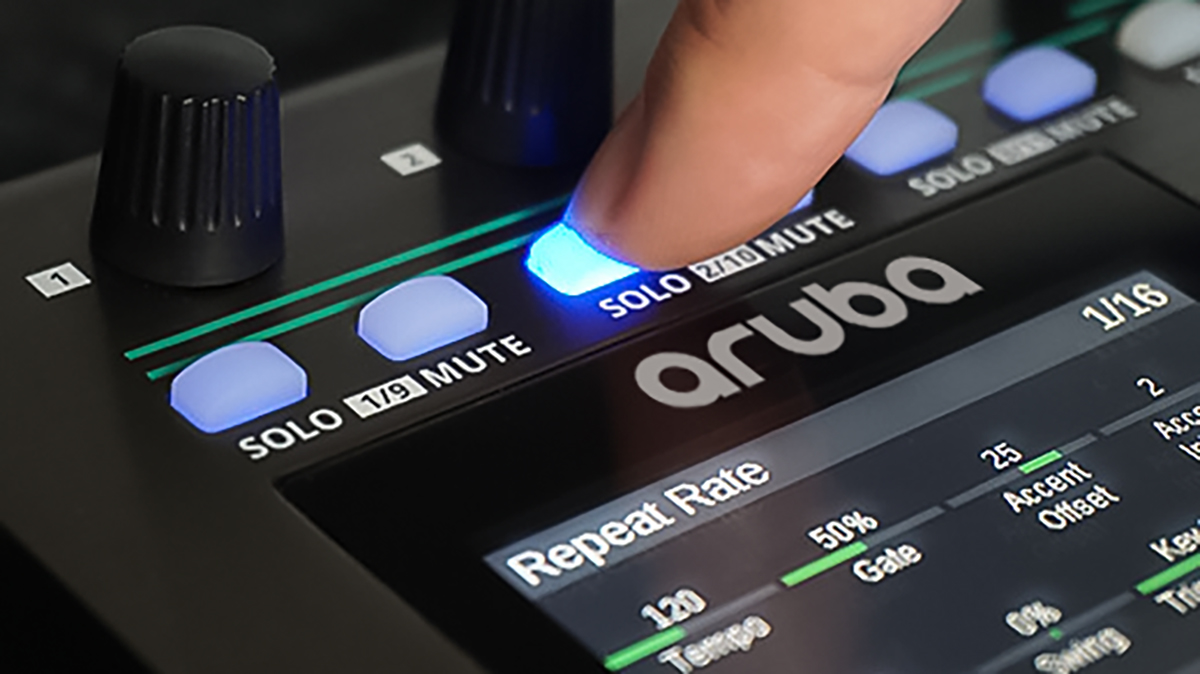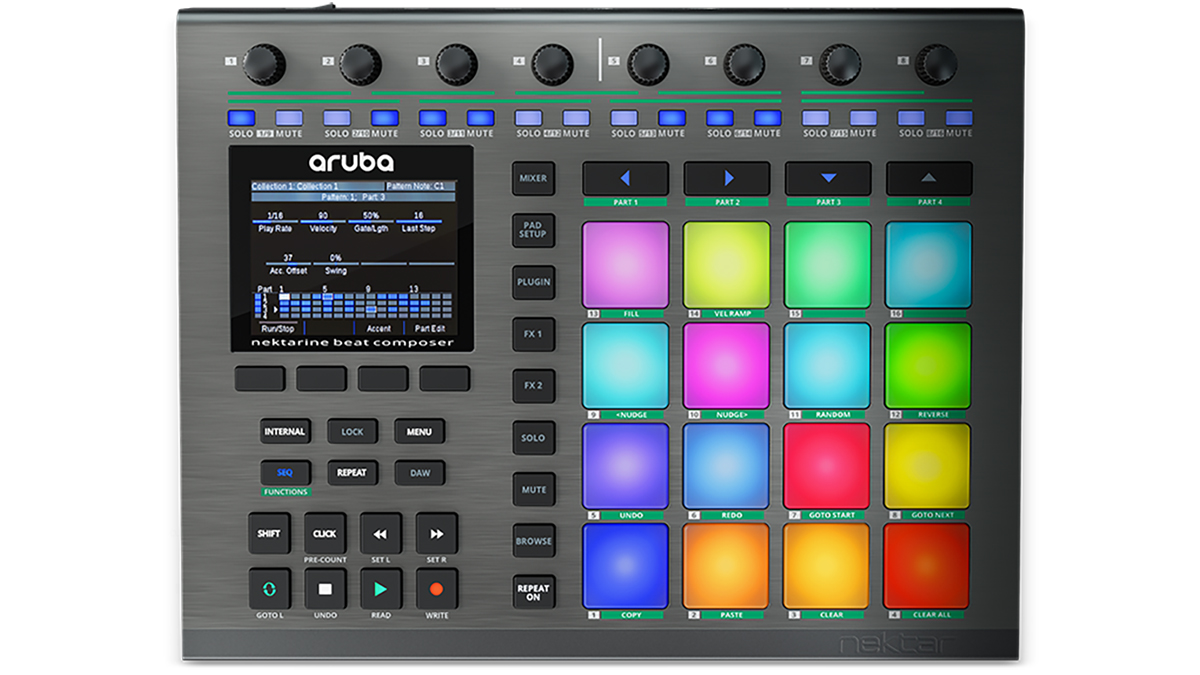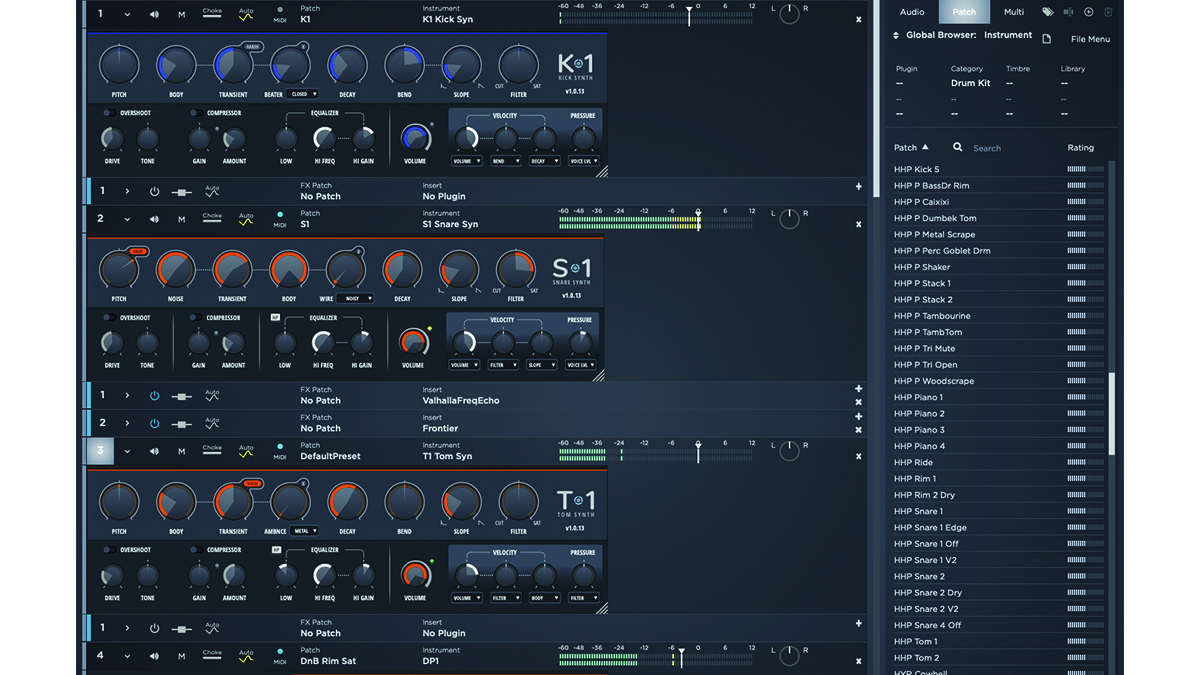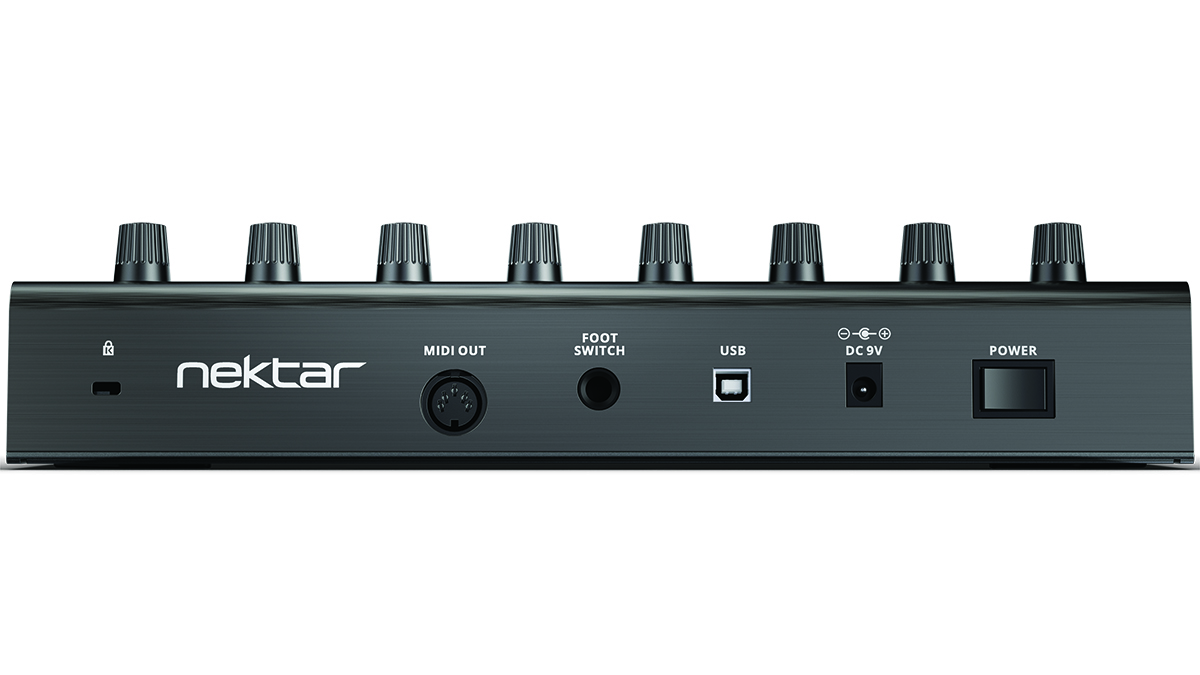
Nektar Aruba: What is it?
Nektar’s 16-pad drum controller, Aruba, pairs perfectly with the versatile Nektarine plugin and promises incredibly fluid DAW integration, so of course we wanted to dive in a little further to see what new tricks this updated beat-maker had in store.
Firstly, a little history… Nektar launched the first version of Aruba, then titled ‘Aura’ in 2020. Over the last three years, a series of updates to both the internal hardware, the Nektarine plugin, and the unit’s moniker have essentially transformed this beat-building behemoth into a completely fresh instrument.
Its 16 RGB pads are among the most sensitive we’ve fondled, offering dexterous scaling of velocity layers and instantaneous sample triggering.
Aruba’s internal step sequencer and built-in Repeat mode make generating spontaneous patterns exceedingly easy, while the refined DAW integration – particularly with Ableton Live – takes it beyond just being a simple finger-drumming pad controller, becoming an all-round transport-controlling DAW interface.

Nektar Aruba: Performance and verdict
While the hardware end is suitably robust, the absolute joy of using Aruba and Nektarine in simpatico comes with the ability to assign different plugins per pad, meaning that you can construct a unique hybrid kit from your drum plugin arsenal extremely quickly.

• Native Instruments Maschine
This beloved beat-hub is also a nexus for controlling NI plugins, not to mention stellar DAW integration.
• Ableton Push
If Live is your DAW, Push is still the ultimate way of interfacing with your rhythmic elements, and more.
The UI of Nektarine offers a top-down view of the pads, with each allowing for choke, volume, pan and mute/solo with effect inserts and sends for each instrument harnessed in the making of your modular beat monster. Plugin insertion is a doddle, while effect routing is neatly presented via Nektarine’s five-page UI.
One of our favourite attributes of Aruba is the way it pushes you to bring your drum samples and plugins together to craft per-pad combinations. It seems like that’s what Nektar is encouraging here.
Along with the rebrand of the hardware unit, comes a slew of ready-made software accompaniments: the T1 Tom synth, the S1 Snare, and K1 Kick, all of which work within the built-in DP-1 drum player. These serve as meaty additions to the existing roster of provided kits and samples, giving 45 unique kits and over 600 unique drum sounds in total, ready to go.
This leads us to another computer-angled facet of Aruba – with DP-1, you can import .wav and .aiff files into its slick UI, which includes a versatile range of tone-shaping abilities such as Attack, Decay and a nice filter and velocity section. DP-1 also offers users a retro-flavoured ‘1982’ mode, which downgrades your sample to the deliciously crummy aesthetic of an 8-bit, early ’80s-era drum machine sample.

Under pressure
After initial tests, we soon realised that we could modify the pad’s sensitivity to work better with our Launchpad-honed fingers. While the unit itself has been set up for optimum responsiveness, it can be further tuned, scaling velocity curves to get the sweet spot for how you play. The pressure put upon these pads can – like similar MPE-angled devices – control dynamics such as sustain, or apply subtle pitch bend.
While superb for finger drumming-based beat programming, the Repeat engine is easy to get to grips with, and is a fun way to add instant, rhythmic movement to your one-shots. The first of the six Solo and Mute buttons promptly switch to becoming repeat rate selectors, meaning you can tap out a kick and, keeping one pad depressed, have flowing hi-hats rippling away that you can briskly change the pace of.
Bearing in mind how effectively Aruba works with software, this smooth pattern-making machine tempts us to fire up some of our softsynths, bass plugins and vocal chops, just to see what happens…

Fingertip-top
As with Nektar’s Panorama range of MIDI keyboard controllers, Aruba can be put to work as an all-round DAW-managing hub, with pre-designed integration with most of the major DAWs covered. Ableton Live, however, is specifically favoured, particularly if you’re using the top-tier Suite iteration.
A special Max for Live plugin allows Aruba to take immediate control of all of the DAW’s parameters, becoming a Maschine-like nervous system, as well as an elegant drum designer.
Aruba provides a strong hardware bridge into the software world, and that’s really why we’re affording it so much praise. That being said, it’d be remiss of us not to point out the extremely nifty onboard step sequencer. Pressing the 16-step buttons adds or removes note steps, and the play rate can be easily scaled.
Best of all, while the step sequencer operates on an entirely standalone basis if you’re plugged in, then the resulting MIDI data is hoovered up by your DAW for further editing.
Less a standalone drum machine, and instead more like a rhythmic-leaning interface that can both manage your DAW and merge your plugins into the most bizarre and wholly unique instruments, Aruba is a time-devouring beat-maker, with a great deal more depth than first meets the eye.
MusicRadar verdict: A colourful new addition to our studio, Aruba is a smooth, sophisticated beatmaker, with a massive amount of depth.
Nektar Aruba: Hands-on demos
Nektar Technology
Sonicstate
Nektar Aruba: Specifications
- Windows XP, Vista, 7, 8, 10 or higher.
- Mac OS X 10.5 or higher.
- CONTACT: Nektar







